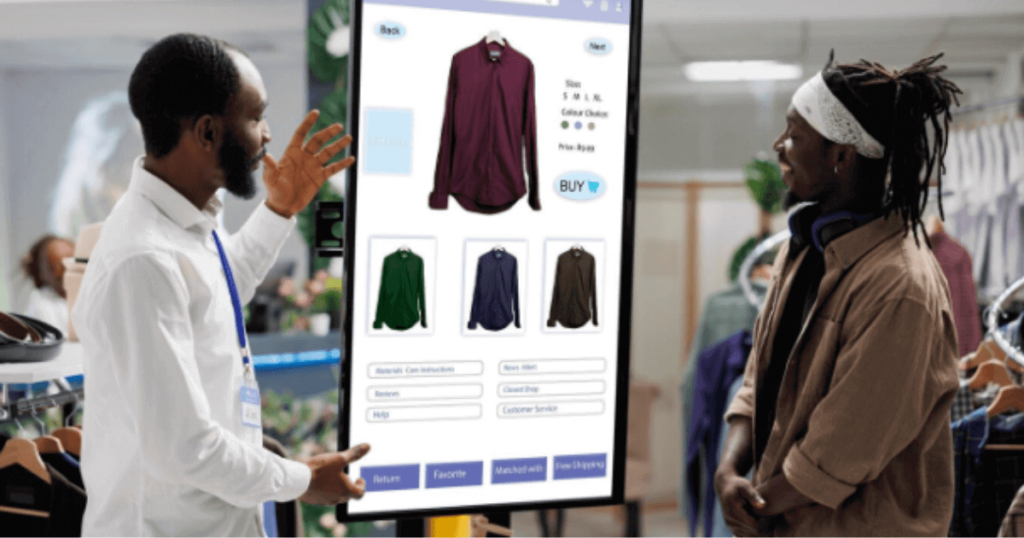Fashion and Digital Advertising — Welcome to an Era of Engagement
Fashion and Digital Advertising are the most innovative sectors in history, with new designs always on top and clever enacted marketing strategies that you never thought possible. Over the last several years, digital technology has also changed how creative teams straddle that line with consumers for fashion brands.

Augmented reality (AR) and virtual reality (VR), which allows users to experience a digital environment through wearable technology goggles such as Oculus Quest or Google Glass, are becoming one of the most effective tools for fashion advertising because it can turn an ad into an augmented and immersive interactive experience.
Serving as the Digital Oasis
The Ad Expert Blog is a great place to start — it examines what digital advertising trends and strategies unfold against emerging behavioral changes— from there’s an infinite number of touch-points for fashion brands to engage with their audience. Brands have increasingly turned to platforms like Instagram and TikTok as an important means of explaining their product. Influencer marketing has become a cornerstone of many fashion brand’s digital strategies, as consumers increasingly trust the recommendations of tastemakers and style icons.
Personalized Experiences
Fashion brands are also utilizing data analytics to personalize the customer experience. By tracking customer behavior and preferences, brands can tailor their marketing messages and product recommendations to individual consumers. This approach fosters deeper customer relationships and drives sales growth.
Sustainable Practices
As consumers become more environmentally conscious, fashion brands are increasingly incorporating sustainability into their marketing narratives. Highlighting eco-friendly materials, ethical production practices, and recycling initiatives resonates with today’s socially responsible consumers.
By embracing these digital trends, fashion brands can forge deeper connections with their audiences, create engaging experiences, and drive business success in the ever-evolving digital landscape.
The Rise of Augmented Reality (AR) in Fashion
AR overlays digital information onto the real world, creating interactive experiences that enhance the consumer journey. In the fashion industry, AR has found numerous applications, including:
i.Virtual Try-Ons
AR-powered virtual try-ons enable shoppers to visualize how clothing items would look on them without physically trying them on. This eliminates the hassle of changing rooms and provides a more convenient and personalized shopping experience.
ii. Interactive Product Catalogs
AR-enabled product catalogs allow customers to explore products in a more engaging way. By simply pointing their smartphone or tablet at a printed catalog, they can see the products come to life with animations, 3D models, and additional product information.
iii. Personalized Recommendations
AR can be used to provide personalized product recommendations based on a customer’s preferences and style. By analyzing their interactions with AR-powered content, brands can offer tailored suggestions that increase the likelihood of purchases.
The Immersive Power of Virtual Reality (VR) in Fashion
VR creates fully immersive digital environments that transport users to a different world. In the fashion industry, VR is being used to:
i. Virtual Fashion Shows
VR fashion shows offer a unique and exclusive experience for consumers. By attending a virtual fashion show, viewers can feel like they are front-row guests, immersing themselves in the atmosphere and details of the runway.
ii. Virtual Stores
VR-powered virtual stores allow customers to explore fashion collections in a highly interactive and engaging way. They can virtually walk through stores, examine products from all angles, and even try on clothes in a digital fitting room.
iii. Product Customization
VR can be used to enable product customization on a whole new level. Customers can virtually design their own clothing items, choosing fabrics, colors, and patterns to create truly unique pieces.
The Impact of Personalized Advertising on Fashion Purchases
Personalized advertising is another key trend in digital fashion marketing. By leveraging data analytics and customer behavior tracking, brands can deliver highly targeted messages that resonate with individual consumers. Personalized advertising can:
i. Increase Conversion Rates
● By showing customers products that align with their interests and preferences, brands can increase the likelihood of purchases.
● Build Customer Loyalty: Personalized experiences foster stronger connections between brands and their customers, leading to increased loyalty and repeat business.
ii. Optimize Marketing Spend
● Personalized advertising helps brands allocate their marketing budgets more effectively by focusing on the most receptive audience segments.
● Leveraging Data Analytics to Optimize Fashion Advertising Campaigns
● Data analytics is essential for understanding customer behavior and measuring the effectiveness of fashion advertising campaigns. Key metrics to track include:
iii. Click-Through Rates (CTRs)
● The percentage of users who click on an ad after seeing it.
● Conversion Rates: The percentage of users who take a desired action, such as making a purchase or signing up for a newsletter.
iv. Return on Investment (ROI)
The financial return generated by a marketing campaign compared to its cost.
v. Customer Lifetime Value (CLTV)
● The total revenue a customer is expected to generate over their lifetime.
● By analyzing these metrics, brands can identify successful campaigns, optimize their strategies, and allocate resources more effectively.
Conclusion
The intersection of fashion and digital advertising is a rapidly evolving landscape. AR, VR, personalized advertising, and data analytics are transforming the way brands engage with consumers and drive sales. By embracing these technologies, fashion brands can create immersive experiences, build stronger relationships with customers, and stay ahead of the competition in the digital age.For further insights on navigating this dynamic space, explore resources like Ad Expert Blog, a valuable platform for delving deeper into digital advertising and web hosting strategies specifically tailored to the fashion industry. This combined approach of cutting-edge technology and expert advice will equip fashion brands to thrive in the ever-evolving digital world.


